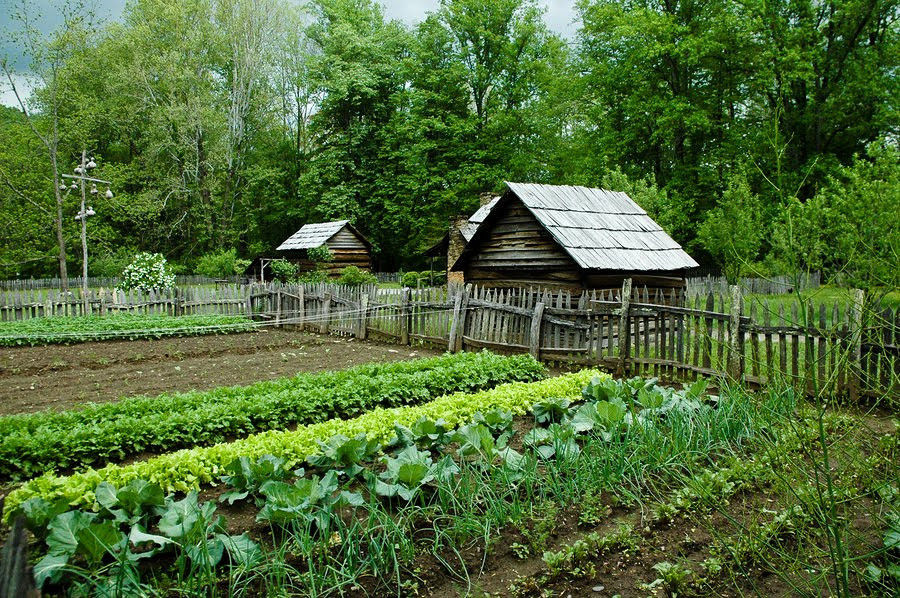HJL,
Try straw bale gardening. It’s a lot less work and very productive. I had more tomatoes, peppers, and cucumbers than I could handle in my first season. It also takes up less space and saves the back pain of bending over so far or kneeling to weed or trim et cetera. You can garden on your patio or roof, or just about anywhere. I’m 68, and I’ll never use another method of gardening. Note! Use straw bales, not hay! – GSS
o o o
HJL,
Respectfully, double digging is a bad idea. It will destroy the soil structure. It is an idea left over from times when heavy chemical fertilization and peat moss were used in suburban gardens. It destroys the microorganisms in the soil as well as the natural soil structure. Adding 2-3 inches of compost on top of the soil each year is much healthier for the plants, worms (who will “till” the compost in by themselves), and microorganisms and fungi that exist and live at SPECIFIC layers in the soil and should not be disturbed. Steve Solomon is not the person to listen to. This article explains further on what a healthy ECO system for gardens and plants is. – PM
o o o
Hugh,
My experience with double digging is that you bury the sod layer upside down at the bottom of the second dig trench. Generally, simply turning sod upside down for ten days won’t kill it, and it is still viable. – OneGuy
HJL’s Comment: I’ve never actually seen double digging done that way. I’m familiar with John Jeavons “How to Grow More Vegetables” where he describes the double digging in detail and the top layer of soil remains on the top in his version. (I have the 1995 edition, but there are updated versions out.) I have used his version with great success on an herb garden I put in for my wife, turning a patch of sand into usable dirt in the first year and by year three, it was the highest yielding soil on my property. The last five years, the plot has been filled with perenial plans, so disturbing the soil is not an option, but the first three years gave it such a head start that it still yields more than any other patch on the property. While it is high yielding, it is also labor intensive and for the majority of garden work, we use a 4 foot rototiller behind a small tractor to till the top layer of soil. It’s certainly faster, but obviously not as good as the manual double dug beds.











Double digging provided me with key information about the existence of a rotten quartz shelf about 8 inches below my garden in that spot. I was digging because that area always seemed “burned up”. Now that area is where I catch rain water. I quickly converted to the “pile it up” philosophy. And, no, 10 days upside down does not kill bermuda grass. Nothing but elbow grease kills bermuda.
I want to address the response from PM. Solomon’s philosophy in the book Gardening When it Counts is specifically the opposite of “an idea left over from times when heavy chemical fertilization and peat moss were used in suburban gardens”. His entire approach is based on the idea that these materials will not always be as readily available, and are already nutritionally sub-par.
The double-dug approach that I described, and that Solomon teaches in his book is intentionally not intensive, meaning that the idea of growing as much as possible in a tiny space is the exact opposite of the goal. The plant spacing is pushed way out, and the general idea is to make it low-maintenance, and hand-workable.
No-till methods that require newspaper, bales of straw, or annual applications of inches of compost/mulch will not be workable in a grid-down scenario. Whether or not no-till methods work or are healthy for the soil are secondary considerations if you don’t have access to the materials. I have read enough testimonials to believe it’s a viable gardening method, but to paint with broad strokes and dismiss digging a garden by hand is to throw away thousands of years of successful food production.
@JA, I would tend to agree that depending upon resources that may not be available is probably not the way to go.
By the way, what I meant by “high yielding” was that the individual plants were not only healthier, but bore much more fruit/seeds than plants grown in my traditional tilled garden. We planted them with the same spacing, but the root system obviously enjoyed the looser and richer soil that they grew in.